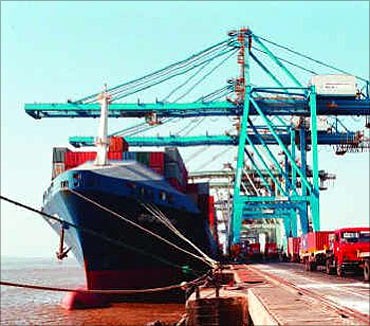
The expansion woes of the Jawaharlal Nehru Port (JNP), India's largest container handling facility, just do not seem to end.
Tenders called for the construction of the fourth container terminal were put on hold when one of the applicants approached the Supreme Court because they were not allowed to bid for the project.
When the court finally gave its decision and everyone expected the bidding process to start, it received another setback when one more potential bidder who did not get security clearance approached the court and managed to have the matter stayed. No one knows when it will finally be decided.
The delay is more serious than it might appear at first glance. All three terminals at JNP function at well above their installed capacity.
The port's ability to handle more container traffic is severely constrained and, considering that the increase in container traffic is inevitable in a rapidly-growing economy, hold-ups and bottlenecks at sea ports only add to transaction costs and severely impact India's exim trade.
...
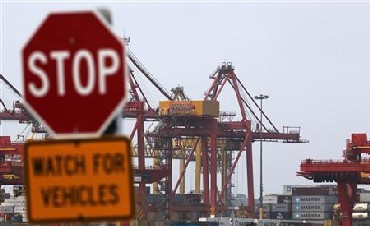
The immediate initiative being taken to tackle this problem is to increase handling capacity in the port-run terminal through the induction of better equipment. New quay cranes have been ordered and are expected to be in place shortly.
The higher productivity of these cranes will augment existing capacity so that even if construction of new berths and terminals is delayed, additional traffic can still be handled.
The port also plans to deepen the draft at the shallow berth to enable smaller vessels to be handled there.
These are welcome steps but they are, at best, palliatives. According to a World Bank estimate (admittedly made before the worldwide slowdown) annual container traffic in the country would grow to 21 million TEUs (twenty-foot equivalent units) by 2015, up from about 9.2 million TEUs in the financial year 2011.
This requires a quantum leap in the handling capacity if we wish to avoid congestion and delay. So, the fourth terminal must come up immediately and plans for the fifth must go beyond the drawing board.
...
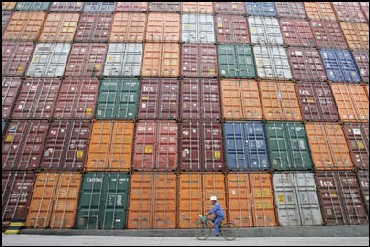
A more immediate question that is closely linked with capacity augmentation but has never been seriously considered is the future of the Jawaharlal Nehru Port Container Terminal (JNPCT) run by the port itself.
There are three container terminals in JNP, of which two are run by private operators, the Nhava Sheva International Container Terminal (NSICT) and the Gateway Terminals India Private Limited (GTIPL).
An analysis of the figures of containers handled by each terminal clearly points to a declining market share for JNPCT. From a high of 1.31 million TEUs handled in 2006-07, JNPCT handled just 0.78 million TEUs in 2009-10.
In 2006-07, the two private terminals together handled less than JNPCT. But by 2010-11 they accounted for 3.39 million TEUs against JNPCT's 0.88 million. While the 13 per cent increase in traffic at the port terminal in that year was higher than that of the other two terminals, it was registered on a much lower base.
...
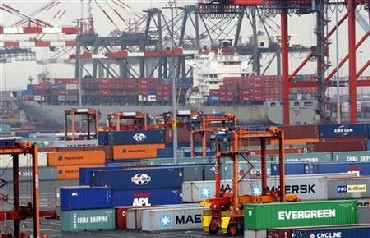
It may seem surprising that the two private terminals that started operation much later than the port terminal should have completely outstripped the latter in such a short time. But there are good reasons for this.
The private terminals place a huge premium on the efficiency of operation. Both crane productivity (number of moves of each individual crane per hour) and berth productivity (total number of moves of all cranes employed on a ship) are higher in the two private terminals.
Since they are able to turn around a vessel in the shortest possible time, shipping lines vote with their feet by opting for these terminals rather than the port terminal. Even in 2008-09, the worst year of the slowdown, GTIPL recorded a small increase in containers handled. Also, though numbers fell in NSICT, it was by barely 5 per cent.
...
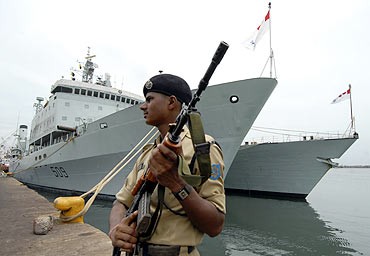
All this seems to argue that one important way to increase capacity is to privatise the port-operated terminal and promote healthy competition among all three terminals. There is no doubt that the port-operated terminal has the potential to perform far above its current level.
And the key to unleash this competitive instinct must be the privatisation of this terminal and its takeover by the best and most efficient bidder. The problem of what to do with the port staff on the terminal after privatisation will definitely arise but it is not insurmountable.
In Chennai the port-operated terminal was privatised nearly 10 years ago and, after some initial teething troubles, it now functions efficiently. In fact the growth of the container business in the Chennai port outstrips that in other ports in India.
...
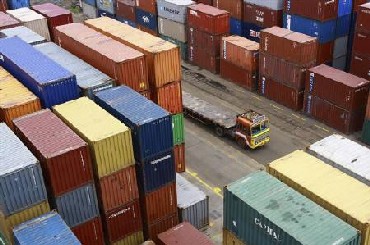
But, important though they are, efficiency and higher handling capacity are not the only reasons why the terminal needs to be privatised. It must be remembered that in respect of the two private terminals, JNP functions as a landlord port.
In that role it must be absolutely impartial in its treatment of all the terminals operating in the port and there should be no whiff of special treatment to any one operator.
As long as the port itself is the operator of one of the terminals, can it be said that the landlord is even handed in its treatment of all three terminals?
...
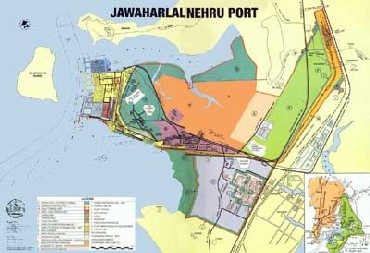
Whether it is a question of providing tug support to large vessels or pilotage to vessels queuing up for early entry into the port or even deciding the order of berthing of different vessels, regardless of how evenly the port authorities hold the balance, there will always be that nagging suspicion that vessels tying up at JNPCT will be given preference over vessels bound for the two private terminals.
So, even more than the efficiency factor, it is equity considerations that argue most strongly in favour of the early privatisation of JNPCT.
JNP must decide whether it wants to be the landlord or the operator. It cannot be both.
The writer is former shipping secretary, Government of India